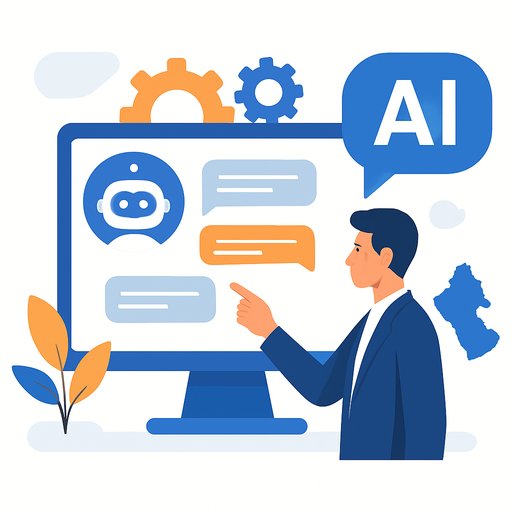AI in Retail Support: How to overcome the hurdles and raise efficiency and CX
AI in retail is no longer a concept. It's here, and support teams sit at the center of the value it creates. With UK retail AI revenues projected to reach roughly US$1.68B by 2030, those who move now can deliver faster resolutions, deeper personalization, and fewer returns-without burning out teams.
The catch: AI only works if your data, processes, and people are set up for it. If your site feels clunky, your systems don't talk to each other, or budgets stall decisions, 2025 could separate brands that get results from those that fall behind.
Why support leaders feel the pressure
- Fragmented data blocks personalization and makes AI outputs unreliable.
- Legacy tech slows response times and limits automation.
- Long budget cycles delay pilots and momentum.
- Customers expect natural, context-aware help across chat, voice, and in-store.
- Mistakes risk trust: low-quality bot replies, privacy issues, and "no human" dead ends.
The three pillars that make AI work
- People: Data scientists and experienced support ops to tune models and policies.
- Data: Accurate, complete, de-duplicated, and accessible across channels.
- Method: Human-in-the-loop workflows, clear KPIs, and tight feedback cycles.
Trends support teams can use right now
Conversational AI is maturing fast. Modern assistants understand intent, tone, and context-then turn chats and calls into structured data for reporting and coaching. That means faster answers and cleaner insights.
Personalization isn't just for marketing. Use purchase history, preferences, and size profiles to reduce returns and guide better recommendations. Pair this with virtual sizing and XR previews for big-ticket items to cut "wrong fit" complaints before they happen.
Five proven retail AI use cases for support
- Virtual customer service: Natural voice and chat assistants that answer instantly, summarize cases, and escalate cleanly to agents with full context.
- Agent training and enablement: A GenAI mentor for policies, product knowledge, troubleshooting, and soft-skill practice-inside your help desk.
- Document processing: Automate invoices, delivery notes, receipts, and RMA forms. Feed results straight into ERP/CRM to reduce manual entry and errors.
- Inventory-aware support: Give agents real-time stock, size, and ETA data. Connect online and in-store systems so advice matches what customers can actually buy.
- Customer surveys at scale: AI-driven CSAT and post-interaction calls that score in real time and generate insights you can act on weekly.
Implementation checklist for support leaders
- Run an ethical impact assessment and set clear guardrails for privacy and safety. See guidance from the ICO and the NIST AI RMF.
- Involve agents, QA, legal, and customers in pilots. Short feedback loops beat big-bang launches.
- Debias training data. Balance intents, accents, languages, and edge cases.
- Scrub PII, set retention limits, and log every AI action for auditability.
- Create escalation rules: thresholds for confidence, sentiment, and value that route to humans.
- Track the right metrics: FCR, AHT, CSAT, NPS, bot containment, deflection, recontact rate, return rate, and refund cost per ticket.
- Start small: one channel, one use case, one KPI. Prove value, then expand.
Activate your data so AI doesn't guess
AI fails without clean inputs. Unify ecommerce, POS, WMS, CRM, contact center, and returns data. Standardize events and IDs so every interaction maps to the same customer and order.
- Define a single product and customer schema.
- Ingest chat/call transcripts and tag intents automatically.
- Store summaries and resolutions for future suggestions and auto-replies.
- Expose key facts (orders, sizes, warranties, policies) via a real-time API layer the assistant can trust.
Quick wins you can deliver in 30-60 days
- Auto-summarize every ticket and call. Agents save minutes; QA improves.
- Intent-based triage and suggested replies for the top 20 contact reasons.
- AI drafting for knowledge articles, with human review before publishing.
- Post-interaction CSAT autocalls or SMS with instant alerts for detractors.
- Proactive "right size" nudges and availability alerts to cut repeat contacts and returns.
Guardrails that protect customer trust
- Set confidence thresholds; never guess on payments, refunds, or sensitive changes.
- Block PII from prompts; mask it in logs.
- Use retrieval for policies and product data so answers stay current and consistent.
- Red-team prompts regularly; track failure modes and fix fast.
- Make "talk to a human" obvious and fast-no dead ends.
Level up your team's skills
Your tools are only as good as your people. Give agents and leads practical training on prompt writing, QA for AI, data basics, and ethical use. Start with short, applied courses and build from there.
- Explore role-based AI courses for support: Courses by job
- Deepen hands-on skills with trusted certifications: AI Certification for ChatGPT
The takeaway
AI will reward support teams that work on the fundamentals: skilled people, clean data, and clear methods. Start small, measure hard, and keep a human in the loop. Bring people, data, and method together, and you'll raise efficiency and customer experience at the same time.
Your membership also unlocks:





